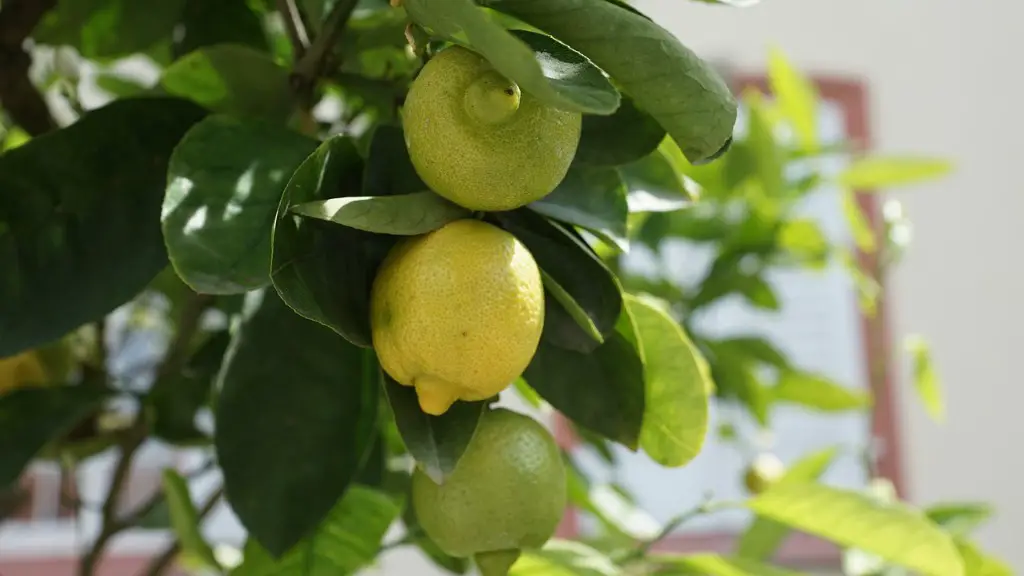Overall Tasks
Caring for an avocado tree in a pot can be a highly rewarding experience. An avocado tree in a pot can provide fresh avocados year-round, with maintenance and care straightforward for a successful harvest. If grown in the right conditions and given the proper attention, an avocado tree in a pot can last for many generations and provide a unique source of nutrition for the family.
The goal of potting an avocado tree is to create an environment that mimics what it would experience in the wild and ensure proper watering, fertilizing, and pruning. Additionally, providing an ideal pot size, utilizing fertilizers that are close to natural sources, and keeping the plant away from high heat and freezing temperatures are all key to ensuring the health and life of an avocado tree in a pot.
Selecting the Right Pot
Size matters when it comes to selecting a pot for an avocado tree. The pot should be large enough to accommodate the roots of the tree, while allowing room for growth. Generally, a large pot with plenty of drainage holes is the best option. Additionally, the pot should be designed to facilitate air flow and avoid water stagnation.
When selecting a pot for an avocado tree, the material is also very important. Terracotta pots are ideal for planting an avocado tree because the porous material allows air circulation and soil moisture to pass through, preventing water from pooling at the roots, leading to root rot and other diseases. The pot should be wide enough to avoid crowding the roots, and heavier materials such as terracotta are preferred, as they are better able to withstand the weight of the tree and the soil.
Soil and Fertilization
It is important to provide the avocado tree with a nutrient-rich, well-draining soil. The ideal pH level is between 6.0 and 7.0, and a good mix combines ripped compost or well-aged manure with soil and fertilizers. This combination will ensure an ample supply of essential nutrients.
Avocados thrive in soils with lots of nitrogen and phosphorus. Regular fertilizing is recommended to ensure the tree is getting enough nutrients. A time-released fertilizer formula that contains nitrogen, phosphorus, and potassium is ideal. It is best to fertilize the tree twice a year or when the leaves start to yellow. If using an organic fertilizer, like worm casings, it is best to mix it into the soil before planting.
Watering and Drainage
Too much or too little water can cause major damage to an avocado tree potted in a container. The soil should be damp when touched, but never soggy. The best way to water is to add a slow, steady stream of water directly to the base of the plant, several times a week. If the soil is too wet, it can cause the roots to rot, but if it is too dry, it can stunt growth.
Having good drainage is also essential. The avocado tree should be able to absorb enough water to nourish the roots without sitting in water and becoming waterlogged. The soil should allow water to drain slowly, rather than drain away too quickly, or else it will not be able to deliver the right amount of moisture to the roots.
Temperature and Light
An avocado tree potted in a container needs proper temperature and light to survive. An avocado tree can tolerate light frost but it should not be exposed to too much heat or cold. Temperatures above 30 degrees Celsius (86 degrees Fahrenheit) can cause damage to the fruits and also scorch the leaves, so it is important to move the pot inside during extreme temperatures.
Like most plants, avocado trees need plenty of sunlight and protection from strong winds. The tree should be placed in an area that receives at least 6 hours of direct sunlight each day. However, if the plant is placed in direct sun for too long, the leaves may become yellow or burned. If this occurs, the tree should be moved to a shadier area.
Pruning and Harvesting
Avocado trees in pots need occasional pruning to keep the tree healthy and promote fruit production. Pruning should be done to remove any broken or dead branches, open up the center of the tree for air circulation, and encourage the growth of new branches. Pruning should be done in early spring and again in late summer.
When the fruits are ready for harvest, it is important to pick them when they are ripe. The best way to tell if an avocado is ripe is by checking the color and feel. Ripe avocados should be dark green and slightly soft when pressed gently. If the avocado is still firm, it can be left to ripen on the tree, or it can be picked and allowed to ripen off the tree.
Summary
Caring for an avocado tree in a pot can be a rewarding experience that requires the right pot, soil and fertilization, proper watering and drainage, temperature, light and pruning, and harvesting of ripe fruits. By understanding the basics of avocado tree care, an amateur gardener can grow a healthy tree and enjoy a bountiful harvest of fresh, delicious avocados all year.

